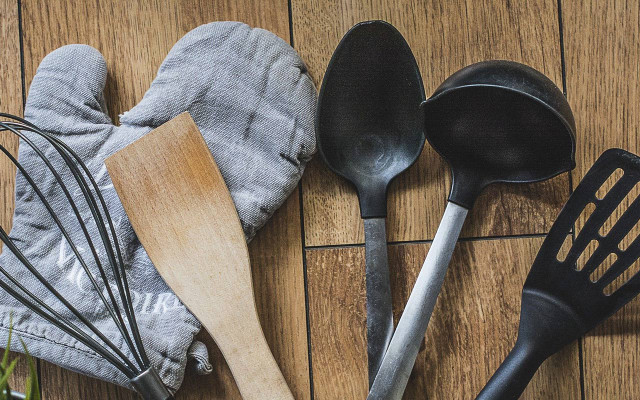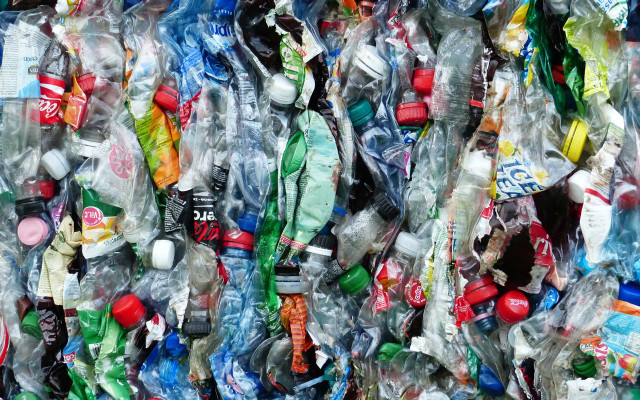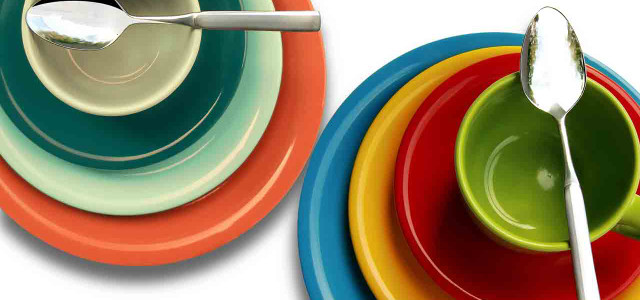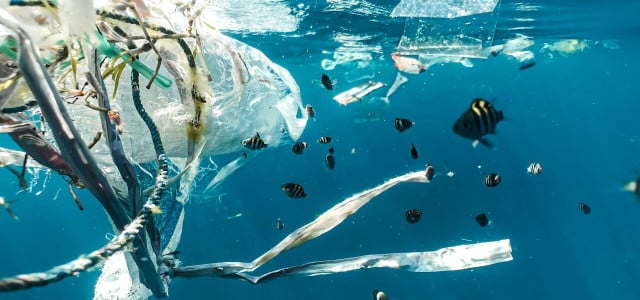From leeched formaldehyde to hidden microplastics, here is why you should stay away from melamine dishes — the popular hard plastic dinnerware.
If you’ve ever shopped for dishware, you’ve probably encountered melamine dishes. They’re bright, durable, and seemingly perfect for kids, picnics and camping. However, the truth about melamine dinnerware isn’t quite so nice.
What is Melamine?
Melamine is a byproduct of the combustion of natural gas. Plastics manufacturers combine the resulting powder with formaldehyde to synthesize resins. These resins are common in everyday products like nail polish and clothing, and even some medicines. However, you can’t always tell if items contain melamine, even if you do your best to live a life without plastic.
Many cooking utensils, dishes and single-use items like chopsticks also contain melamine. As popular and practical as they are, using melamine dishes is not particularly healthy or sustainable.
Here are five big reasons why you should rethink your choice of dishware.
#1: Melamine Dishes Aren’t Microwave Safe or Heat-Proof

Microwaving melamine dinnerware can cause it to crack and break, increasing the risk of chemical leaching (see #3). This limitation contradicts the convenience factor often associated with these dishes, besides posing potential health hazards. In short: melamine dishes are not microwave safe.
At temperatures above 70°C, the chemical bonds in melamine dinnerware begin to break down and release formaldehyde and melamine itself. According to the Food and Drug Association (FDA), both compounds can have harmful effects, such as increasing the risk of kidney stones, kidney failure and bladder problems. Furthermore, formaldehyde irritates the eyes, skin and mucous membranes and is known to trigger allergies. When inhaled, it may also increase the risk of sinonasal and nasopharyngeal cancer.
The FDA sets strict limits for both formaldehyde and melamine. A kilogram of food can contain a maximum of 2.5 mg melamine and 15 mg formaldehyde. However, heating melamine can cause it to leech higher levels of these chemicals. Even just filling melamine dishes with food or beverages that are too hot can quickly exceed thresholds, leaching toxic substances into what you’re eating or drinking.
Cooking utensils like spoons, spatulas and tongs are widely available in melamine plastic. That means you should never leave them in hot pots or pans during cooking due to the risk of melamine and formaldehyde contamination.
#2. Salt, Fat and Acid Dissolve Melamine Into Your Food



It’s not just your microwave you need to avoid with melamine dishes. Acidic, fatty and salty items can also cause melamine and formaldehyde to dissolve into your food. This is especially true when you store foods with greasy or salty sauces in melamine dinnerware.
For your own safety, consider steering clear of melamine completely and use containers made of glass or stainless steel. If you’re unsure, and especially if you are feeding infants or small children, it’s best to avoid melamine dishware.
#3. They Leech Chemicals and Unknown Toxins



In most cases — and yet another reason to go plastic-free — manufacturers aren’t required to indicate exactly which substances they use in their plastic products. This can make it impossible to know which other toxins melamine products contain. One frequent offender is nonylphenol, which keeps plastics stable in sunlight and heat. We should avoid nonylphenol because we metabolize it quickly, and it is an endocrine disruptor and xenoestrogen.
#4. Melamine Dishware Causes Needless Environmental Damage



The production of melamine dishes is an intensive process that contributes significantly to environmental pollution. Additionally, melamine is not biodegradable. Once discarded, these dishes accumulate in landfills, contributing to the already burgeoning waste problem. The ecological implications of this accumulation can’t be overstated, leading to negative impacts on wildlife and plant life alike.
Normally, plastics are shredded during the recycling process and then reformed under heat. This last step is impossible with melamine, so it often ends up as hazardous waste. Researchers are currently working on complex chemical processes to dissolve melamine dishes into powder, which we can mix with other materials to form new products. However, at this time, to reduce waste and avoid potential health risks, it’s best not to use melamine altogether.
#5. The Danger of Microplastic Contamination
Another worrisome aspect of melamine dinnerware is the potential release of microplastics. Over time, the once smooth and hard surface of melamine dishes can break down and release these tiny plastic particles into your food and the environment — there are even microplastics in the ocean, and ocean pollution is already damaging ecosystems and causing coral bleaching.
The Best Alternatives to Melamine Dishes



Stainless Steel: These sturdy, long-lasting and heat-resistant products are perfect for your picnic or camping trip. There is a wide variety of stainless steel products available, including cutlery, lunch boxes and even bottles made for children. With these sustainable options, there’s no need for melamine plates.
Wood: Wooden cooking utensils and dishes are heavier than melamine dinnerware but more sustainable. In addition, bowls and cups made from wood are more robust than their porcelain counterparts. They’re also biodegradable! Olive wood plates and cooking utensils, bamboo cutting boards or coconut bowls are especially nice options. Bear in mind that exotic wood production often uses fertilizers, irrigates with local drinking water and has a high carbon footprint during transit.
Wheat Straw: Wheat straw plates and other dinnerware, while technically bioplastics (see below), are growing in popularity as plastic alternatives. They’re not yet as readily available as wood and stainless steel, but considering they’re largely made using renewable resources, it’s worth the effort to look around.
And what about bioplastics? Well, they are not always the ideal alternative they seem. Products that use plant-based materials are becoming more widespread. However, it’s important to note that the palm leaves, bamboo, sugar cane and corn that form the basis for these bioplastics are often grown on recently deforested land. These plants are usually genetically modified varieties grown in monocultures. Crops cultivated for bioplastics also use land that could otherwise be used for sustainable agriculture.
Read more:
- Plastiglomerate: Plastic Rocks Are a Horrible New Type of Pollution
- What Is Noise Pollution? 5 Examples and Solutions
- Plastic Packaging that Makes You Question Humanity
Important Information regarding Health-related Topics.
** Links to retailers marked with ** or underlined orange are partially partner links: If you buy here, you actively support Utopia.org, because we will receive a small part of the sales proceeds. More info.Do you like this post?









